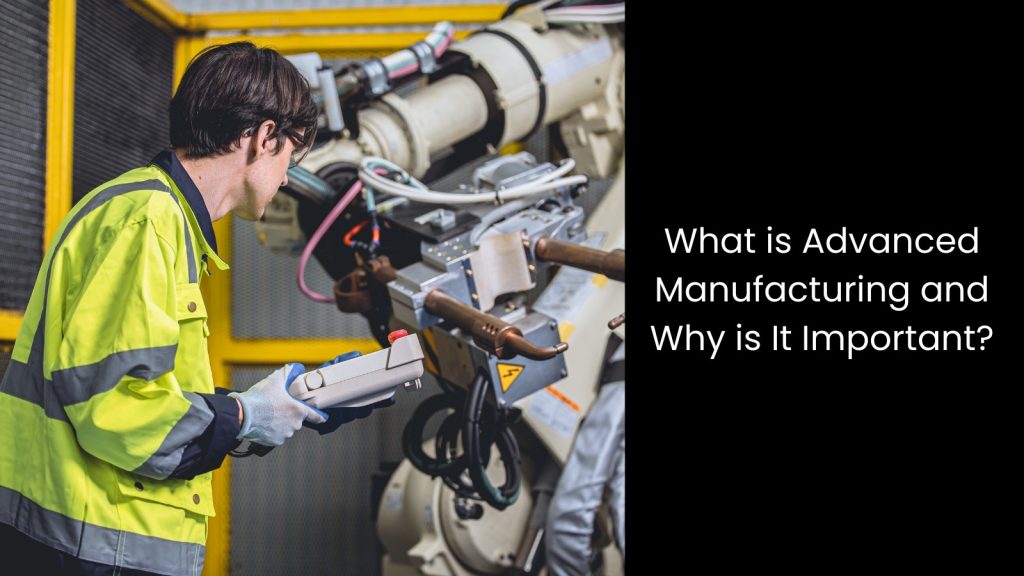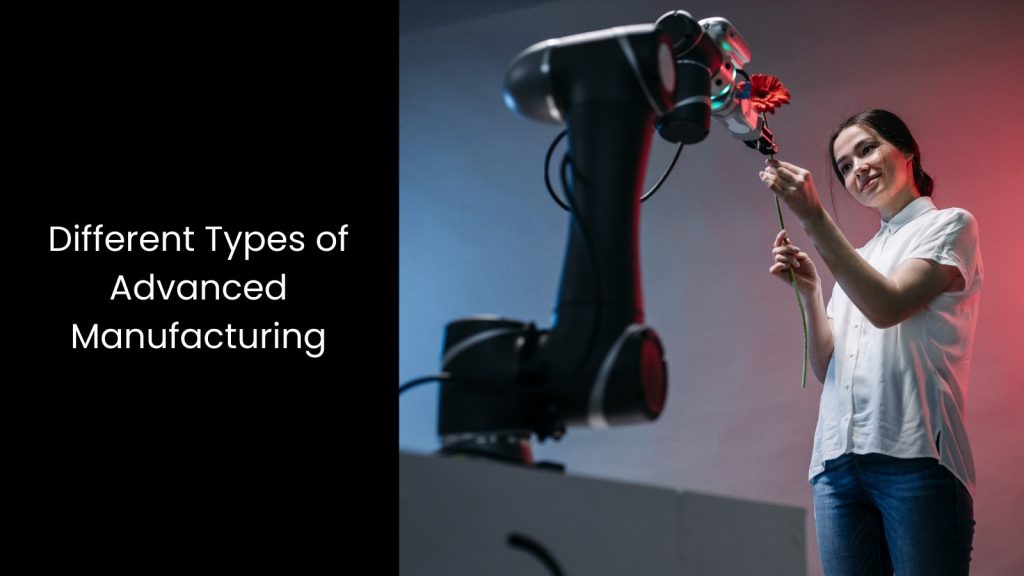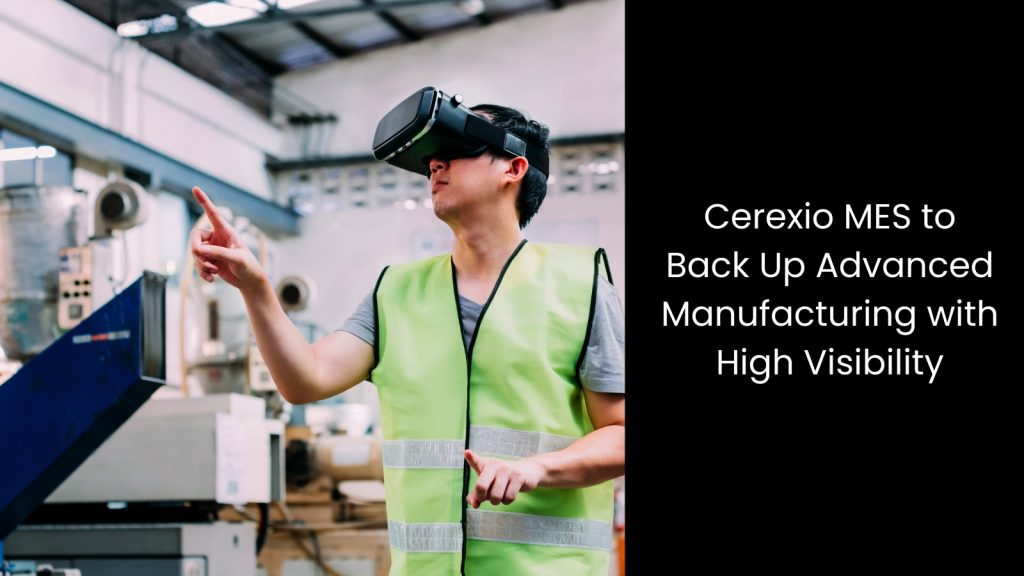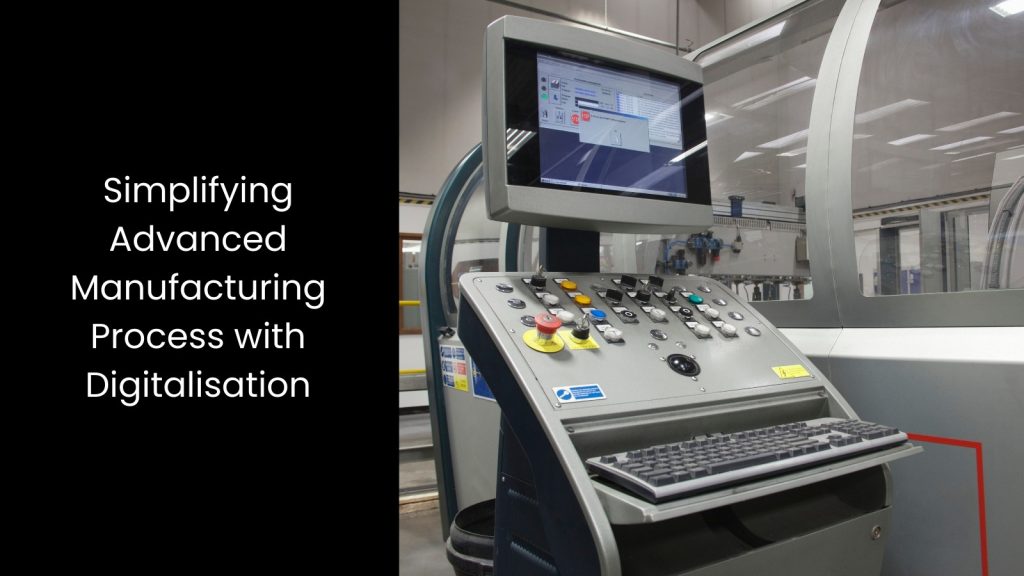When we talk about the modern production realm, we witness that these advanced manufacturing technologies are changing the way industries operate, pushing the boundaries of what is possible. From smart factories to sustainable production methods, manufacturers are turning to cutting-edge technologies to stay competitive, reduce costs, and improve product quality. These innovations not only streamline operations but also offer new ways to customise and optimise products on a global scale. Bot there are different types of advanced manufacturing, so how can you know what types suits your manufacturing process well?
This article is all about that.
We will know
What is Advanced Manufacturing and Why is It Important?

- Walking beyond traditional manufacturing technologies, the world has entered the realm of advanced manufacturing. The uniqueness of this is that it allows employing cutting-edge technology, automation, and data-driven processes to make production faster, smarter, and more efficient. As we said, it goes beyond traditional methods by integrating AI, robotics, and digital twin technology to improve precision and reduce waste.
- Manufacturers use real-time data to predict issues before they happen, which keeps production smooth and reduces downtime. This approach helps industries like aerospace, automotive, and healthcare create high-quality products with fewer resources.
- Therefore, there is no doubt that companies that use advanced manufacturing stay ahead because they adapt to demand, lower costs, and improve product quality.
Different Types of Advanced Manufacturing

Advanced Robotics and Automation
These capabilities bring intelligence, speed, and precision to advanced manufacturing by using smart machines, AI-driven systems, and robotic arms to handle complex production tasks. Modern factories rely on automation to boost efficiency, reduce errors, and streamline workflows without unnecessary delays.
Plus, robots work alongside humans to take on repetitive, dangerous, or highly detailed tasks, allowing workers to focus on design, innovation, and quality control. Automated systems adjust in real time, optimising production lines and preventing costly downtime.
This way, manufacturers achieve higher output, maintain consistent product quality, and lower operational costs because robotic systems work nonstop without fatigue. Smart sensors and machine learning algorithms help factories predict maintenance needs before breakdowns happen, keeping operations smooth. The demand for precision continues growing, and automation ensures every product meets strict quality standards.
Factories embracing advanced robotics reduce waste, speed up assembly lines, and create safer work environments.
As many predict, automation does not replace humans, but it enhances their capabilities by handling tedious jobs, and letting skilled workers take on more complex roles. Businesses using robotics in advanced manufacturing adapt faster to market changes, meet customer demands efficiently, and scale production without disruptions.
Industrial robots shape the future of manufacturing by increasing productivity, improving workplace safety, and making factories more intelligent.
Digital Manufacturing
Digital manufacturing is another territory of modern manufacturing that transforms production by using advanced digital technologies like computer-aided design (CAD) and computer-aided manufacturing (CAM) to automate and optimise every step.
It is possible for engineers to create precise digital models of products using CAD, allowing factories to produce complex designs with extreme accuracy. CAM software then takes over, directing machines with detailed instructions to cut, shape, and assemble materials exactly as planned. Likewise, manufacturers rely on digital simulations to test and refine processes before production starts, helping them spot issues early and avoid wasting materials.
Similarly, smart factories use interconnected systems to monitor real-time performance, adjust workflows instantly, and maintain smooth operations. With this, customisation becomes easier since digital models can be modified quickly, allowing factories to produce unique products without slowing down production lines.
It is not a myth that businesses using digital manufacturing improve efficiency, cut costs, and reduce human error. Automation speeds up production while maintaining consistent quality, making it easier to scale operations. Predictive analytics help manufacturers plan maintenance before machines break down, keeping everything running without unexpected stops.
Factories adopting digital manufacturing stay ahead because they produce smarter, faster, and with more flexibility than ever before. The future of manufacturing relies on digital solutions to keep up with demand, improve product quality, and push innovation to new heights.
Additive Manufacturing
Additive manufacturing, also known as 3D printing, builds objects layer by layer using materials like metal, plastic, and ceramics, making it one of the most advanced manufacturing technologies today.
You know that traditional manufacturing removes material to shape a product. However additive manufacturing constructs parts with precision and minimal waste. Factories use this technology to create lightweight, complex designs that traditional methods struggle to produce.
With this in place, engineers design digital models, and high-tech printers bring them to life with extreme accuracy. This process speeds up production, reduces costs, and allows manufacturers to customise products without expensive moulds or tooling.
Nowadays, businesses rely on additive manufacturing to produce prototypes quickly, helping them test ideas before mass production. Aerospace, healthcare, and automotive industries use it to manufacture parts that are stronger, lighter, and more efficient. Also, supply chain issues decrease because factories print parts on demand instead of storing large inventories.
It is indeed a huge step for manufacturers as now they can solve design challenges with this technology, creating once-impossible structures. The shift to additive manufacturing changes how products are made, giving industries faster, smarter, and more efficient ways to innovate.
Sustainable and Green Manufacturing
Sustainable and green manufacturing uses advanced manufacturing technology to reduce waste, cut energy use, and create eco-friendly products without harming the environment.
Factories focus on cleaner production methods, using renewable energy, recycling materials, and designing efficient systems that lower carbon emissions. Production teams can develop smart processes that minimise resource consumption while keeping production fast and cost-effective.
Walking this way, businesses can replace harmful chemicals with safer alternatives and redesign products to use biodegradable or recyclable materials. Manufacturing plants install energy-efficient machines, optimise supply chains, and reuse industrial waste to create a circular economy where nothing goes to waste. This approach helps companies meet strict environmental regulations while lowering costs and improving brand reputation.
Supply chain disruptions decrease because factories rely less on limited raw materials and more on sustainable alternatives. Pollution drops as manufacturers reduce emissions, switch to electric or hydrogen-powered equipment, and use AI to monitor and control energy use.
As you can see, factories can solve major environmental challenges by producing high-quality goods without exhausting natural resources.
Smart Manufacturing
The speciality of smart manufacturing is that it uses advanced manufacturing technology to connect machines, systems, and processes through data and automation, making factories faster, smarter, and more efficient.
As a big part of it, sensors, artificial intelligence, and the Internet of Things (IoT) allow machines to communicate, track performance, and make real-time decisions without human intervention. This way, factories rely on smart manufacturing to reduce downtime, improve product quality, and optimise production schedules with minimal waste.
Businesses use predictive maintenance to fix machines before they break, preventing costly delays and unexpected shutdowns. Automation speeds up tasks, cutting labour costs while improving accuracy and consistency.
Smart manufacturing helps industries produce high-quality products while staying competitive in a rapidly evolving market. Businesses embracing this shift gain better control over production, increase sustainability, and improve overall performance.
Cerexio MES to Back Up Advanced Manufacturing with High Visibility

Cerexio’s robust MES is the best possible way to enhance advanced manufacturing as it provides real-time visibility into production processes, tracking every step from raw materials to finished goods. Our smart solution ensures data transparency, allowing managers to monitor performance, identify issues early, and optimise workflows. This visibility boosts efficiency, reduces downtime, and ensures consistent product quality across operations.
Simplifying Advanced Manufacturing Process with Digitalisation

You can see that the fusion of digital technologies with advanced manufacturing is unlocking endless possibilities. In this ever-evolving age, digitalisation is the key to success in the modern manufacturing landscape. Will you agree?
